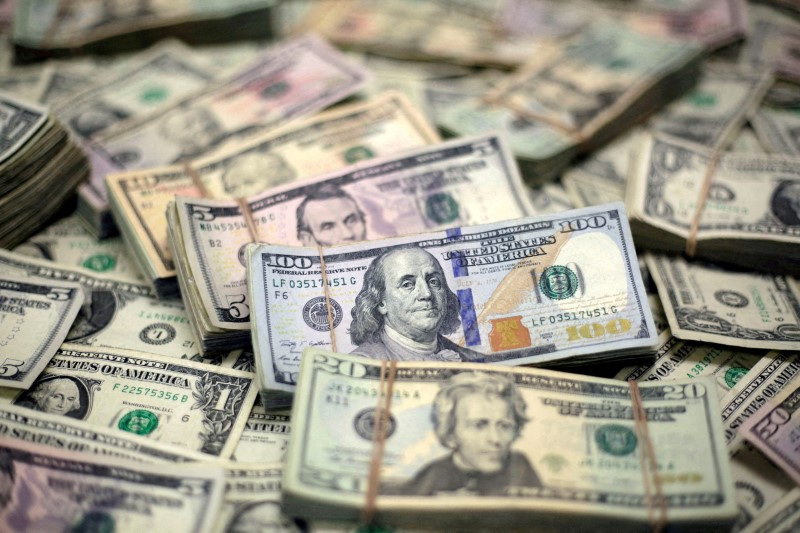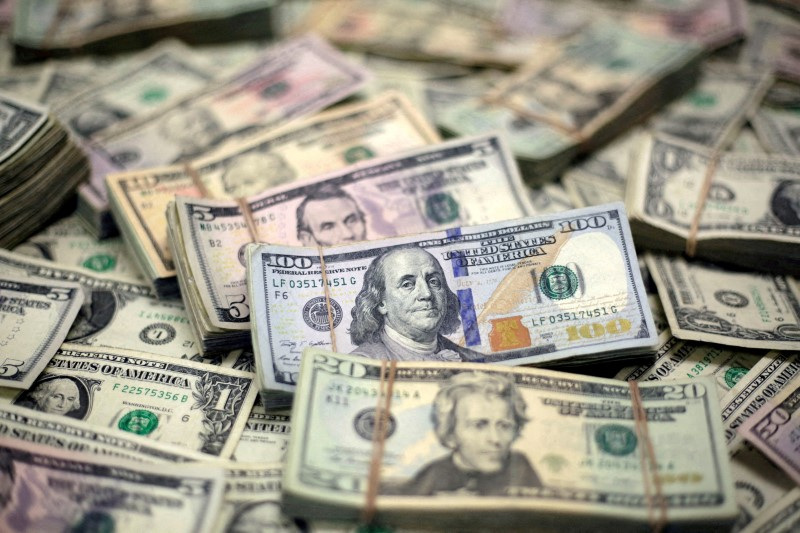Forex
Dollar backs off post-election highs ahead of Fed decision

By Amanda Cooper
LONDON (Reuters) -The dollar held near four-month highs on Thursday, having scored its biggest one-day rally in two years following Donald Trump’s win in the U.S. presidential election, and as investors prepped for the Federal Reserve’s upcoming rate decision.
Sterling rallied after the Bank of England cut interest rates but said it expected UK inflation and growth to pick up more quickly than it had previously anticipated.
Front and centre, however, was the dollar, which rose by as much as 2% at one point against a basket of currencies on Wednesday, as investors piled into U.S. assets that they expect would benefit from Trump’s proposed policies on tariffs and taxes.
Trump’s win is unlikely to make any immediate difference to the Fed, which is expected to cut interest rates by 25 basis points later in the day. So investors will start to look to who Trump’s key appointees might be, as well as whether or not his Republican party wins both chambers of Congress in a “Red sweep”, which could dictate how easily he may enact some of his proposals.
“If there is, then we will probably, in the market collectively, conclude he will get more of his fiscal agenda through. And that could be dollar-supportive,” Rabobank currency strategist Jane Foley said.
“There is going to be a lot of back and forth to try and work out exactly what is the inflation impact of this going to be, and therefore, how is the Fed going to react? But, generally speaking, I think all of that is certainly dollar-positive through 2025,” she said.
More immediately, traders will want the Fed to indicate what to expect in December and beyond, particularly after last week’s October jobs report, which was well below expectations, due in large part to disruption from recent hurricanes and labour strikes.
Trump’s victory has also fuelled speculation the Fed might reduce rates at a slower and shallower pace, as his policies on restricting illegal immigration and enacting new tariffs could boost inflation.
Markets now see about a 67% chance the Fed will also cut rates next month, down from 77% on Tuesday, according to the CME Group’s (NASDAQ:) Fed Watch Tool.
The , which measures the U.S. currency against six others, was down 0.3% at 104.84 after surging to its highest since July 3 on Wednesday, when it logged its biggest single-day gain since September 2022, up 1.5%.
EURO SHRUGS OFF GERMAN GOVERNMENT COLLAPSE
Sterling neared session highs after the BoE cut rates as forecast but suggested future rate cuts may only be gradual, given the expected rise in growth and inflation stemming from finance minister Rachel Reeves’ budget last week.
The pound was last up 0.4% on the day at $1.29365.
The euro rose 0.3% to $1.0764, having tumbled as low as $1.06828 for the first time since July 27 on Wednesday.
The single European currency shrugged off political crisis in Germany, where the already awkward coalition led by Chancellor Olaf Scholz collapsed late on Wednesday.
Sweden’s Riksbank cut rates by half a point, as expected, leaving the crown up 0.2% against the euro at 11.618 , while Norges Bank left Norwegian rates unchanged, pushing the crown up 1% against the euro .
The yen hit a three-month low against the dollar of 154.715. Japan’s top currency diplomat Atsushi Mimura flagged officials’ readiness to act, marking the government’s strongest warning to speculators in recent months.
The Japanese currency was last up 0.45% at 153.92.
The yuan rose 0.5% after China’s exports blew past forecasts, having earlier touched its lowest level in nearly three months.

traded at 7.1677 yuan per dollar.
fell 1.32% to $74,663, having hit a record high on Wednesday of $76,499.99. rallied 4.5% to $2,811, around its highest since early August.

 Forex3 years ago
Forex3 years agoForex Today: the dollar is gaining strength amid gloomy sentiment at the start of the Fed’s week

 Forex3 years ago
Forex3 years agoUnbiased review of Pocket Option broker

 Forex3 years ago
Forex3 years agoDollar to pound sterling exchange rate today: Pound plummeted to its lowest since 1985

 Forex3 years ago
Forex3 years agoHow is the Australian dollar doing today?

 Cryptocurrency3 years ago
Cryptocurrency3 years agoWhat happened in the crypto market – current events today

 World3 years ago
World3 years agoWhy are modern video games an art form?

 Commodities3 years ago
Commodities3 years agoCopper continues to fall in price on expectations of lower demand in China

 Economy3 years ago
Economy3 years agoCrude oil tankers double in price due to EU anti-Russian sanctions





















